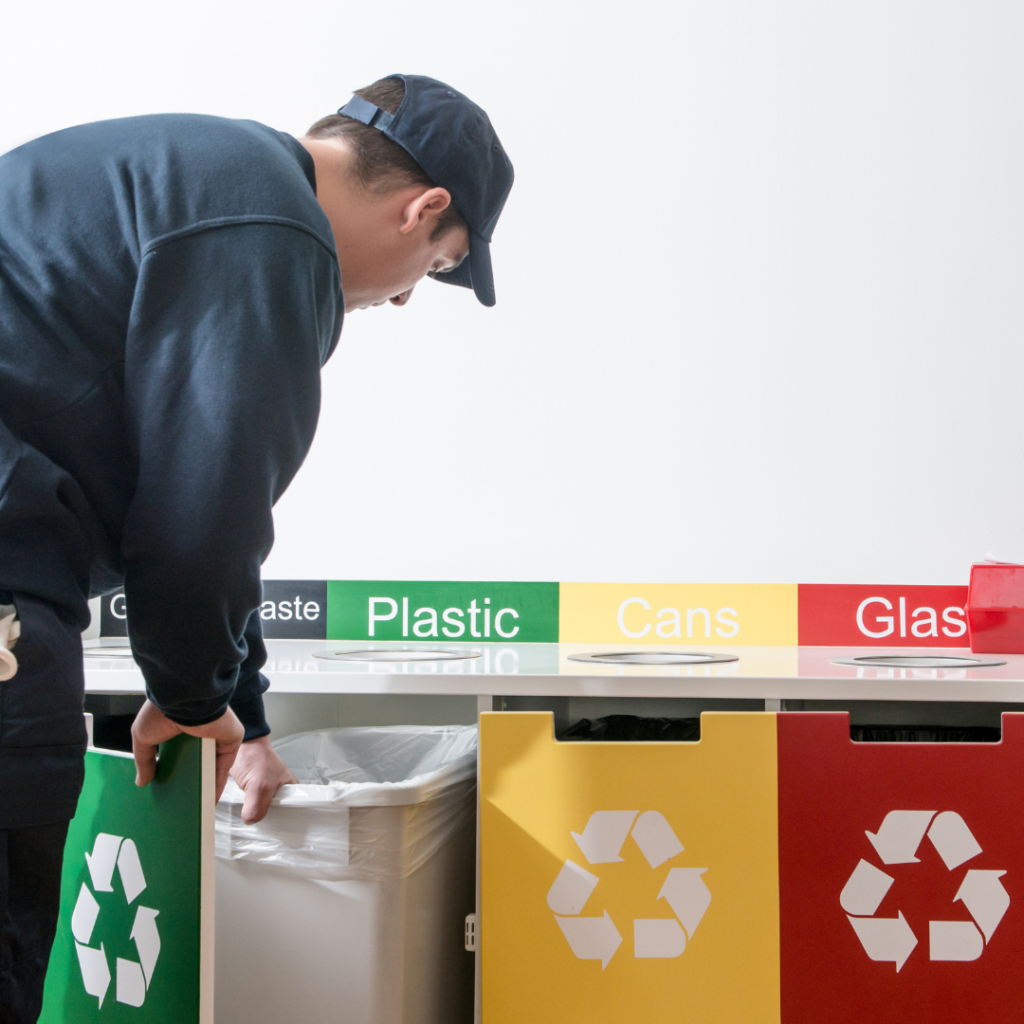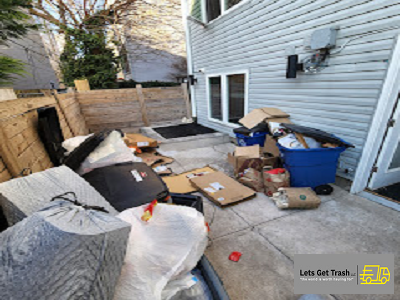In our modern world, managing hazardous waste has become a pressing concern. Understanding the various types of hazardous waste is crucial for effective disposal and minimizing environmental impact. From chemical byproducts to electronic waste, each category presents unique challenges and requires specific handling methods. This informative guide delves into the diverse forms of hazardous waste, offering insights into their characteristics and the eco-friendly disposal solutions available. By adopting responsible disposal practices, individuals and businesses can contribute to a cleaner, safer environment while mitigating the risks associated with hazardous materials. Explore this comprehensive breakdown to learn more about safeguarding our planet through proper waste management.
Understanding Hazardous Waste

Hazardous waste encompasses various materials, including chemicals, solvents, heavy metals, and contaminated substances, which pose significant threats to human health and the environment if improperly managed. By comprehending the properties and classifications of hazardous waste, individuals can implement appropriate handling protocols and safety measures. Regulatory compliance with agencies like the Environmental Protection Agency (EPA) is essential to ensure adherence to strict guidelines governing the handling, transport, and disposal of hazardous materials. Through comprehensive risk assessments, construction companies can identify potential hazards associated with specific materials and develop robust management plans to protect workers and the surrounding environment. Prioritizing safety and environmental responsibility in hazardous waste management practices is imperative for sustainable development and safeguarding public health.
Identifying Hazardous Waste
Identifying hazardous waste is the foundational step in ensuring safe handling and disposal practices. Hazardous waste encompasses a wide range of materials that pose significant risks to human health and the environment. From corrosive chemicals to flammable substances, understanding the characteristics and properties of these materials is essential for effective management. In this section, we delve deeper into the various aspects of identifying hazardous waste and the importance of thorough assessment.
Sources of Hazardous Waste
Hazardous waste can originate from various sources, including industrial processes, manufacturing facilities, laboratories, and construction sites. In the construction industry, materials such as lead-based paints, asbestos-containing materials, and solvents are common sources of hazardous waste. Additionally, demolition activities can generate debris that may contain hazardous substances, further emphasizing the need for proper identification and management.
Physical and Chemical Properties
Identifying hazardous waste requires a thorough understanding of its physical and chemical properties. Physical properties such as color, odor, and appearance can provide initial clues regarding the nature of the waste. Chemical properties, including pH levels, volatility, and toxicity, offer insights into potential risks and hazards associated with the material. Analytical testing and laboratory analysis may be necessary to confirm the presence of hazardous substances and determine appropriate handling procedures.
Labeling and Documentation
Proper labeling and documentation are critical aspects of identifying hazardous waste. Containers holding hazardous materials should be clearly labeled with information such as the contents, hazards, handling instructions, and emergency contact details. Material Safety Data Sheets (MSDS) or Safety Data Sheets (SDS) provide comprehensive information about the properties and hazards of chemicals, facilitating safe handling and disposal practices. Maintaining accurate records of hazardous waste generation, storage, and disposal is essential for regulatory compliance and accountability.
Categories of Hazardous Waste

Hazardous waste comes in various categories, each presenting distinct risks and requiring specific handling procedures:
- Toxic Waste: Contains substances harmful when ingested, inhaled, or absorbed. Examples include pesticides, heavy metals, and organic compounds, posing health risks and environmental contamination.
- Corrosive Waste: Can corrode materials upon contact, including acids and bases. Proper handling prevents damage to infrastructure and environmental harm.
- Flammable Waste: Ignites easily, posing fire hazards. This includes solvents, fuels, and chemicals requiring special storage and handling to prevent accidents.
- Reactive Waste: Prone to violent reactions when exposed to other substances. Examples include unstable materials like certain metals and peroxides, requiring careful handling to avoid accidents.
- Biohazardous Waste: Contains biological agents like pathogens and toxins, posing infection risks. Proper protocols ensure safe disposal and prevent the spread of disease.
- Radioactive Waste: Emits radiation, posing health risks such as radiation sickness and cancer. Specialized containment and disposal methods are necessary to prevent exposure.
- Mixed Waste: Contains multiple hazardous components, requiring tailored handling and disposal methods to address diverse risks.
Understanding these categories helps in developing effective management strategies, ensuring safety, environmental protection, and regulatory compliance.
Regulatory Compliance
Compliance Challenges in Construction
Construction projects present unique compliance challenges due to their dynamic nature and diverse range of activities. Unlike stationary facilities, such as manufacturing plants, construction sites are temporary and may involve multiple contractors and subcontractors. Coordinating compliance efforts among various stakeholders becomes paramount to ensure consistency and adherence to regulatory standards. Moreover, construction activities often generate different types of hazardous waste, each requiring specific handling procedures. From concrete debris to lead-based paints, identifying and managing these materials in accordance with regulatory requirements demand meticulous attention to detail and proactive risk mitigation strategies.
Risk of Non-Compliance
The consequences of non-compliance with hazardous waste regulations can be severe. Regulatory agencies have the authority to levy hefty fines, issue enforcement actions, and even pursue criminal charges against violators. Beyond financial penalties, reputational damage and legal liabilities can tarnish a company’s image and jeopardize its future prospects.
Strategies for Compliance Success
Achieving regulatory compliance in hazardous waste management requires a proactive and multifaceted approach. Construction companies should prioritize education and training to ensure all personnel understand their roles and responsibilities in adhering to relevant regulations. Implementing robust internal controls and monitoring mechanisms can help track compliance efforts and identify areas for improvement.
Risk Assessment and Management
Risk assessment and management play a pivotal role in ensuring the safe handling and disposal of hazardous waste, particularly in the construction industry. This process involves a comprehensive evaluation of potential hazards associated with specific materials, taking into account factors such as toxicity, flammability, and reactivity. By conducting thorough risk assessments, construction companies can identify potential exposure risks to workers and the surrounding environment, allowing them to implement appropriate control measures to mitigate harm. This may include measures such as engineering controls, administrative controls, and the provision of personal protective equipment (PPE). Furthermore, risk management extends beyond the initial assessment phase, requiring ongoing monitoring and adaptation to changing conditions on construction sites. By prioritizing risk assessment and management, construction companies can minimize the likelihood of accidents, protect the health and safety of their workforce, and mitigate potential environmental impacts, ensuring compliance with regulatory requirements and fostering a culture of safety and responsibility within the industry.
Conclusion
Understanding the intricacies of hazardous waste is essential for maintaining a safe environment and complying with regulations. Through this exploration of various types of hazardous waste, from chemical to biological, we’ve highlighted the importance of proper handling and disposal methods. At Let’s Get Trash, we recognize the critical role we play in construction debris removal, especially concerning hazardous waste. Our commitment to Philadelphia’s community safety drives us to adhere to the highest standards in waste management. Whether it’s asbestos, lead-based paint, or other hazardous materials, our team is equipped and trained to handle them responsibly. By partnering with us, you not only ensure the cleanliness of your construction sites but also contribute to a healthier, safer environment for everyone. Contact Let’s Get Trash at (215) 791-6239 to discuss your hazardous waste removal needs today.






